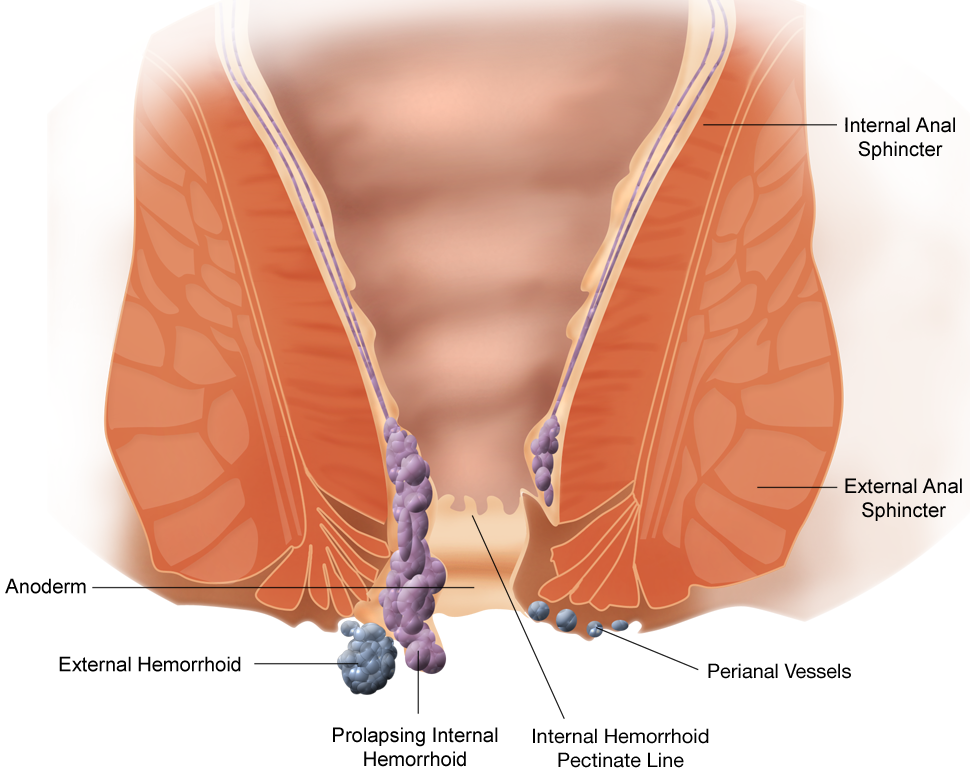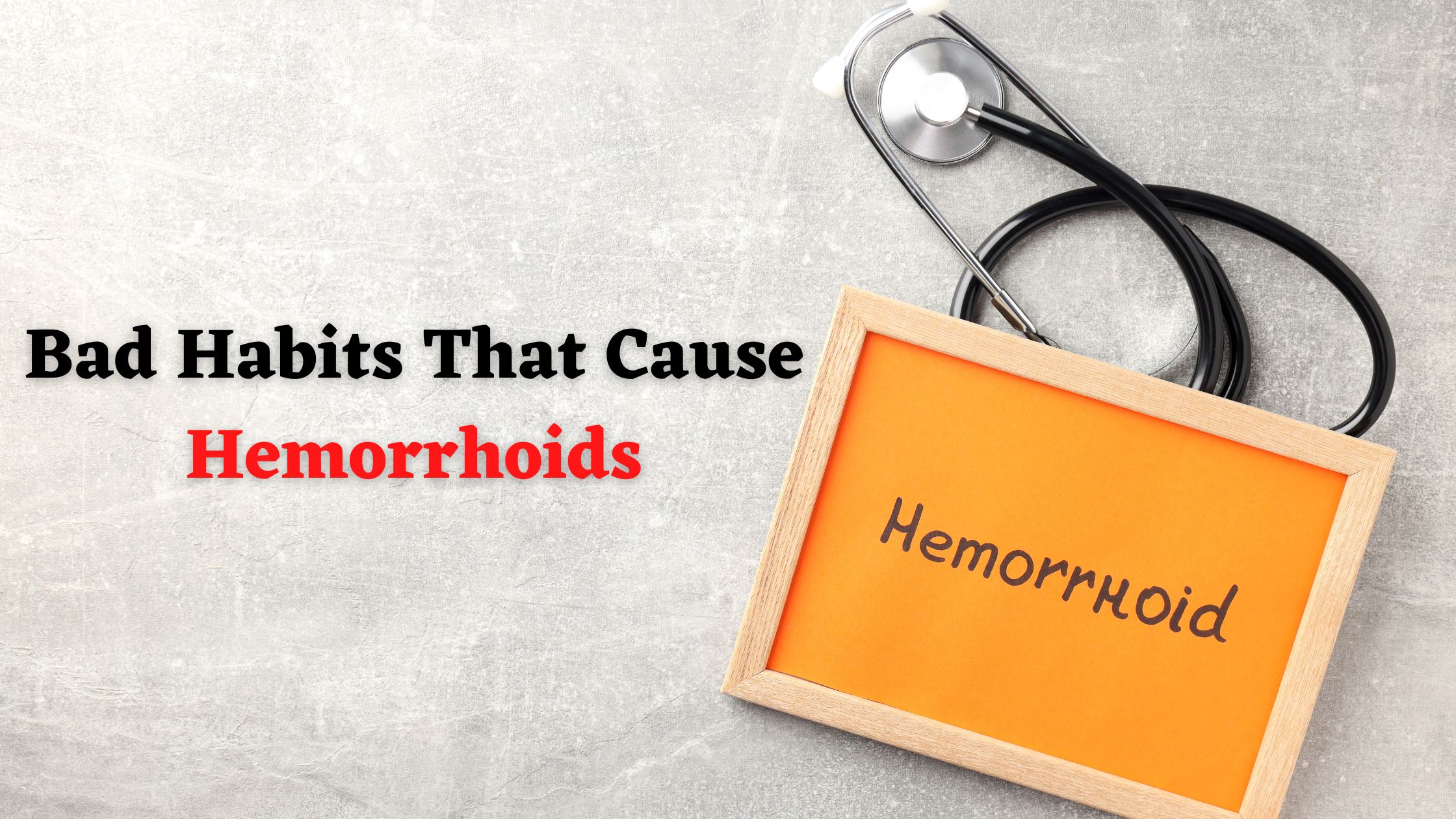
ICD-10-CM Coding for Hemorrhoids Simplified – Medical Coding Buff Expand Search Toggle Menu Search Previous Continue Search Expand Toggle Menu Close Search
Learn the different types of hemorrhoids, symptoms, causes, complications, diagnosis, and ICD-10-CM coding for hemorrhoids. Coding examples are provided. Medical Coding Buff

ICD-10-CM Coding for Hemorrhoids Simplified – Medical Coding Buff Expand Search Toggle Menu Search Previous Continue Search Expand Toggle Menu Close Search
Learn the different types of hemorrhoids, symptoms, causes, complications, diagnosis, and ICD-10-CM coding for hemorrhoids. Coding examples are provided. Medical Coding Buff

ICD-10-CM Coding for Hemorrhoids Simplified – Medical Coding Buff Expand Search Toggle Menu Search Previous Continue Search Expand Toggle Menu Close Search
Learn the different types of hemorrhoids, symptoms, causes, complications, diagnosis, and ICD-10-CM coding for hemorrhoids. Coding examples are provided. Medical Coding Buff

ICD-10-CM Coding for Hemorrhoids Simplified – Medical Coding Buff Expand Search Toggle Menu Search Previous Continue Search Expand Toggle Menu Close Search
Learn the different types of hemorrhoids, symptoms, causes, complications, diagnosis, and ICD-10-CM coding for hemorrhoids. Coding examples are provided. Medical Coding Buff

ICD-10-CM Coding for Hemorrhoids Simplified – Medical Coding Buff Expand Search Toggle Menu Search Previous Continue Search Expand Toggle Menu Close Search
Learn the different types of hemorrhoids, symptoms, causes, complications, diagnosis, and ICD-10-CM coding for hemorrhoids. Coding examples are provided. Medical Coding Buff

AMA Confirms Proper Coding for Ultroid Hemorrhoid Treatment – AAPC Knowledge Center
Until recently, providers using Ultroid® didn’t have a clear code choice to report Ultroid® treatment as a nonsurgical method to treat hemorrhoids.
Hemorrhoids

File:Hemorrhoid.png – Wikimedia Commons
ICD-10 Version:2010
ICD-10 Online contains the ICD-10 (International Classification of Diseases 10th Revision)

Hemorrhoidectomy CPT code – simplify medical coding – YouTube
Simplify Medical coding Institute. Online Courses offered. Basic and Advanced Medical coding. CPC Exam training. Whatsapp: +91 9360951544.simplify medical…

Hemorrhoid – Wikipedia

Development of the ICD-10 simplified version and field test | Semantic Scholar Semantic Scholar
The field trial results demonstrated that the APN I CD-10 simplified version is feasible for implementation as an effective tool to implement ICD-10 clinical coding for hospitals, and developing countries may consider adopting the APn ICD/APN simplified version for Icd-10 code assignment in hospitals and health care centres. Background: The International Statistical Classification of Diseases and Related Health Problems, 10th Revision (ICD-10) has been used in various Asia-Pacific countries for more than 20 years. Although ICD-10 is a powerful tool, clinical coding processes are complex; therefore, many developing countries have not been able to implement ICD-10-based health statistics (WHO-FIC APN, 2007). Objective: This study aimed to simplify ICD-10 clinical coding processes, to modify index terms to facilitate computer searching and to provide a simplified version of ICD-10 for use in developing countries. Method: The World Health Organization Family of International Classifications Asia-Pacific Network (APN) developed a simplified version of the ICD-10 and conducted field testing in Cambodia during February and March 2016. Ten hospitals were selected to participate. Each hospital sent a team to join a training workshop before using the ICD-10 simplified version to code 100 cases. All hospitals subsequently sent their coded records to the researchers. Results: Overall, there were 1038 coded records with a total of 1099 ICD clinical codes assigned. The average accuracy rate was calculated as 80.71% (66.67–93.41%). Three types of clinical coding errors were found. These related to errors relating to the coder (14.56%), those resulting from the physician documentation (1.27%) and those considered system errors (3.46%). Discussion: The field trial results demonstrated that the APN ICD-10 simplified version is feasible for implementation as an effective tool to implement ICD-10 clinical coding for hospitals. Conclusion: Developing countries may consider adopting the APN ICD-10 simplified version for ICD-10 code assignment in hospitals and health care centres. The simplified version can be viewed as an introductory tool which leads to the implementation of the full ICD-10 and may support subsequent ICD-11 adoption.

Haemorrhoids – Classification – Management – TeachMeSurgery
Haemorrhoids are defined as an abnormal swelling or enlargement of the vascular anal cushions. They cause bright red rectal bleeding upon defecation, itching

What Is Rectal Bleeding ICD-10?
As a patient, it is good to know the different codes that are used in medical billing, such as the ICD-10 for rectal bleeding.

Hemorrhoid Coding Made Easy – AAPC Knowledge Center
Correct hemorrhoid coding depends on the type (internal, external, or mixed) and number of hemorrhoids treated, as well as the treatment method.

Round Table 142: Navigating ICD-10-CM Diagnosis Coding Hot Spots – Ciox
Coding Hot Spots Its accessible through a link that will provide in our follow-up e-mail, we sent out this afternoon.

VA Disability Ratings for Hemorrhoids – Hill & Ponton, P.A.
The VA rates hemorrhoids under 38 CFR § 4.114 Schedule of Ratings , with 0%, 10%, and 20% ratings being possible.

VA Disability for Piles, Hemorrhoids, and Other Lower GI Problems
Hemorrhoids are common in folks that are getting older, but could have been caused by your time in the service.

Kode icd 10 hemorrhoid external, Interna, Grade 1, 2, 3, dan 4 – INOVASITEKNO.COM
Kode icd 10 hemorrhoid external, Interna, Grade 1, 2, 3, dan 4 – Hemoroid adalah penyakit yang ditandai dengan pembesaran pembuluh darah di daerah anus.

Transanal Hemorrhoidal Dearterialization (THD) | Newly Added Code for it
Transanal Hemorrhoidal Dearterialization (THD) is a non-excisional surgical technique developed for the treatment of internal hemorrhoids.
Digestive Health Associates
Review of frequently asked questions relating to colonoscopy

2020 CPT coding changes | The Bulletin
Changes to Current Procedural Terminology codes and an overview of related reporting information are summarized.

10 tips to Get Rid of Haemorrhoids/Piles | Dr. Abhijit Gotkhinde
Are you suffering from painful hemorrhoids? Here are the 10 tips to Get Rid of Haemorrhoids/Piles by Dr. Abhijit Gotkhinde

Hemorrhoid Banding CPT Code: A Quick Guide
To get started, review the following hemorrhoid banding CPT code guide. It will walk you and your office staff through the ins and outs of coding and reimbursement for treatment with a hemorrhoid banding ligator.

What Is Rectal Bleeding ICD-10?
As a patient, it is good to know the different codes that are used in medical billing, such as the ICD-10 for rectal bleeding.

VA Disability Ratings for Hemorrhoids – Hill & Ponton, P.A.
The VA rates hemorrhoids under 38 CFR § 4.114 Schedule of Ratings , with 0%, 10%, and 20% ratings being possible.
Change How You Report Internal Hemorrhoid Excision in CPT® 2020 : Hemorrhoidectomy
Master code addition and revisions. CPT® 2020 delivers some changes you need to know for reporting your surgeon’s work for internal hemorrhoid excision procedures. Read on to make sure you catch the new code, two revised codes, and even a deleted Category III hemorrhoidectomy […]

Crosswalk Between ICD-9 and ICD-10: Top 100 Colon and
Free essays, homework help, flashcards, research papers, book reports, term papers, history, science, politics

Diagnosa Ambeien, Ini Kode Yang Perlu Anda Ketahui – Vena Wasir
K.64 adalah kode diagnosa ambeien yang digunakan dalam rekam medis BPJS Kesehatan. Diagnosa ambeien dilakukan melalui pemeriksaan fisik

Bad Habits That Cause Hemorrhoids-Dr.Abhijit Gotkhinde
If you are searching for a Hemorrhoids specialist in Pune contact Hemorrhoids specialist Dr.Abhijit Gotkhinde.

Genome-wide analysis of 944,133 individuals provides insights into the etiology of hemorrhoidal disease | medRxiv
Hemorrhoidal disease (HEM) affects a large fraction of the population but its etiology including suspected genetic predisposition is poorly understood. We conducted a GWAS meta-analysis of 218,920 HEM patients and 725,213 controls of European ancestry, demonstrating modest heritability and genetic correlation with several other diseases from the gastrointestinal, neuroaffective and cardiovascular domains. HEM polygenic risk scores validated in 180,435 individuals from independent datasets allowed the identification of those at risk and correlated with younger age of onset and recurrent surgery. We identified 102 independent HEM risk loci harboring genes whose expression is enriched in blood vessels and gastrointestinal tissues, and in pathways associated with smooth muscles, epithelial and endothelial development and morphogenesis. Network transcriptomic analyses of affected tissue from HEM patients highlighted HEM gene co-expression modules that are relevant to the development and integrity of the musculoskeletal and epidermal systems, and the organization of the extracellular matrix. We conclude HEM has a genetic component that predisposes to smooth muscle, epithelial and connective tissue dysfunction. ### Competing Interest Statement The authors have declared no competing interest. ### Funding Statement This project was funded by Andre Frankes and Clemens Schafmayers DFG grant Discovery of risk factors for hemorrhoids (ID: FR 2821/19-1). The study received infrastructure support from the DFG Cluster of Excellence 2167 Precision Medicine in Chronic Inflammation (PMI) (DFG Grant: EXC2167). The project was supported by grants from the Swedish Research Council to MD (VR 2017-02403), the Novo Nordisk Foundation (grants NNF17OC0027594 and NNF14CC0001) and BigTempHealth (grant 5153-00002B). The work on cross-trait analysis for diverticular disease presented in this manuscript was supported by the German Research Council (DFG, ID: Ha3091/9-1) and the Austrian Science Fund (FWF, ID: I1542-B13). EGCUT work has also been supported by the European Regional Development Fund and grants SP1GI18045T, No. 2014-2020.4.01.15-0012 GENTRANSMED and 2014-2020.4.01.16-0125. This study was also funded by EU H2020 grant 692145 and Estonian Research Council Grant PUT1660. ### Author Declarations I confirm all relevant ethical guidelines have been followed, and any necessary IRB and/or ethics committee approvals have been obtained. Yes The details of the IRB/oversight body that provided approval or exemption for the research described are given below: The enrolment of study participants was approved by the ethics committees or institutional review boards of all individual participating centers or countries. Written informed consent was obtained from all study participants. All necessary patient/participant consent has been obtained and the appropriate institutional forms have been archived. All necessary patient/participant consent has been obtained and the appropriate institutional forms have been archived. Yes I understand that all clinical trials and any other prospective interventional studies must be registered with an ICMJE-approved registry, such as ClinicalTrials.gov. I confirm that any such study reported in the manuscript has been registered and the trial registration ID is provided (note: if posting a prospective study registered retrospectively, please provide a statement in the trial ID field explaining why the study was not registered in advance). Yes I have followed all appropriate research reporting guidelines and uploaded the relevant EQUATOR Network research reporting checklist(s) and other pertinent material as supplementary files, if applicable. Yes The data supporting the findings described in this study are available from the corresponding author upon request.
Digestive Health Associates
Review of frequently asked questions relating to colonoscopy

Genome-wide analysis of 944,133 individuals provides insights into the etiology of hemorrhoidal disease | medRxiv
Hemorrhoidal disease (HEM) affects a large fraction of the population but its etiology including suspected genetic predisposition is poorly understood. We conducted a GWAS meta-analysis of 218,920 HEM patients and 725,213 controls of European ancestry, demonstrating modest heritability and genetic correlation with several other diseases from the gastrointestinal, neuroaffective and cardiovascular domains. HEM polygenic risk scores validated in 180,435 individuals from independent datasets allowed the identification of those at risk and correlated with younger age of onset and recurrent surgery. We identified 102 independent HEM risk loci harboring genes whose expression is enriched in blood vessels and gastrointestinal tissues, and in pathways associated with smooth muscles, epithelial and endothelial development and morphogenesis. Network transcriptomic analyses of affected tissue from HEM patients highlighted HEM gene co-expression modules that are relevant to the development and integrity of the musculoskeletal and epidermal systems, and the organization of the extracellular matrix. We conclude HEM has a genetic component that predisposes to smooth muscle, epithelial and connective tissue dysfunction. ### Competing Interest Statement The authors have declared no competing interest. ### Funding Statement This project was funded by Andre Frankes and Clemens Schafmayers DFG grant Discovery of risk factors for hemorrhoids (ID: FR 2821/19-1). The study received infrastructure support from the DFG Cluster of Excellence 2167 Precision Medicine in Chronic Inflammation (PMI) (DFG Grant: EXC2167). The project was supported by grants from the Swedish Research Council to MD (VR 2017-02403), the Novo Nordisk Foundation (grants NNF17OC0027594 and NNF14CC0001) and BigTempHealth (grant 5153-00002B). The work on cross-trait analysis for diverticular disease presented in this manuscript was supported by the German Research Council (DFG, ID: Ha3091/9-1) and the Austrian Science Fund (FWF, ID: I1542-B13). EGCUT work has also been supported by the European Regional Development Fund and grants SP1GI18045T, No. 2014-2020.4.01.15-0012 GENTRANSMED and 2014-2020.4.01.16-0125. This study was also funded by EU H2020 grant 692145 and Estonian Research Council Grant PUT1660. ### Author Declarations I confirm all relevant ethical guidelines have been followed, and any necessary IRB and/or ethics committee approvals have been obtained. Yes The details of the IRB/oversight body that provided approval or exemption for the research described are given below: The enrolment of study participants was approved by the ethics committees or institutional review boards of all individual participating centers or countries. Written informed consent was obtained from all study participants. All necessary patient/participant consent has been obtained and the appropriate institutional forms have been archived. All necessary patient/participant consent has been obtained and the appropriate institutional forms have been archived. Yes I understand that all clinical trials and any other prospective interventional studies must be registered with an ICMJE-approved registry, such as ClinicalTrials.gov. I confirm that any such study reported in the manuscript has been registered and the trial registration ID is provided (note: if posting a prospective study registered retrospectively, please provide a statement in the trial ID field explaining why the study was not registered in advance). Yes I have followed all appropriate research reporting guidelines and uploaded the relevant EQUATOR Network research reporting checklist(s) and other pertinent material as supplementary files, if applicable. Yes The data supporting the findings described in this study are available from the corresponding author upon request.
